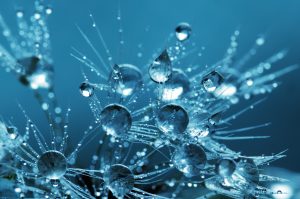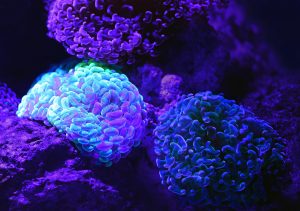
The vast majority of products labeled and sold as colloidal silver fall into this category due to the low degree of manufacturing complexity and resulting low cost of production. The silver content in these products consists of both silver ions and silver particles.
Typically, 90% of the silver content is in the form of ionic silver and the remaining 10% of the silver content is in the form of silver particles. The silver ions are produced by electrolysis and may be described as “dissolved silver”. Products produced by electrolysis are frequently described as “electro colloids”. Because the majority of the silver content in these products is dissolved silver rather than metallic silver particles, it would be more technically accurate to describe these products as silver solutions.
Confusingly, ads for these products frequently claim that silver ions are small silver particles or describe the product as consisting of ionic silver particles. Silver ions are not the same as silver particles and the two terms are not interchangeable. Ionic silver is also referred to as monatomic silver and silver hydrosol by some producers who choose not to describe their products using the scientifically correct terminology. These are marketing terms used to hide the truth that what is being sold is an ionic silver solution. For more details read About Ionic Silver.
How to Tell If A Product Is Mostly Ionic Silver
Silver solutions are typically clear like water or have a slight yellow tint. These products are clear because silver that is dissolved in water looks just like sugar or salt that is dissolved in water; it has no visible appearance. The producers of ionic silver solutions will suggest that colloidal silver should look like clear water, but this is incorrect.
Companies that sell ionic silver claim that their product is “true colloidal silver” in an attempt to confuse the buyer. Do not be fooled. If the product is clear, then it is an ionic silver product, not a true silver colloid. Colloidal particles, when present in sufficient concentration, absorb visible light causing the colloid to exhibit an “apparent color”. The apparent color is the complement of the absorbed wavelength. Silver ions do not absorb visible light and therefore appear as clear colorless liquids.
Many producers of ionic silver recommend that the product be stored only in glass containers. Some specify only amber or cobalt glass bottles because their products are photosensitive and deteriorate when exposed to light. True colloids do not have these issues.
How to Test For Ionic Silver Products

To figure out whether a solution is ionic silver, you only need add chloride ions. Common table salt, which is sodium chloride, will do. If silver ions are present the chloride ions will combine with the silver ions and create a white, cloudy appearance. To form a cloud that is visible requires that a sufficient concentration of silver ions be present, typically about 10 ppm or above. Simply place 1-2 ounces of ionic silver in a clear glass. Add a few grains of table salt.
Observe whether, as the salt dissolves, a white cloud of silver chloride forms in the solution. If so, eventually, the entire solution will turn cloudy. If more salt is added, the white silver chloride will become denser until all the silver ions have combined with the available chlorine ions. If no silver ions are present then no white cloud will form. Here’s the rub: Some products will not make a white cloud of silver chloride when table salt is added because they contain no silver at all, or very little silver. Believe it or not, lab analysis has shown that some “silver” products actually contain no silver!
The difference between silver ions and silver particles boils down to the fact that silver ions combine with chloride ions to form silver chloride and silver particles do not.
Safe Usage
“Colloidal silver” generators sold to home hobbyists all produce ionic silver solutions. Because ionic silver products contain a low percentage of their silver content in the form of particles, they all have a fairly low particle surface area relative to the total silver content. Ionic silver is not without merit. Ionic silver is a strong anti microbial and serves well in situations where chloride is not present. When chloride is present (inside the human body), the silver particle content will survive to produce benefit.
Ionic silver products, when taken according to the manufacturers recommended dosage, will not cause argyria, a condition that causes the skin to turn blue-gray.

TechnoBabble: Misleading Language And Bogus Science
The term colloidal means particles not ions, but producers of ionic silver products will try to convince the buyer that their product is a silver colloid. The common thread in most advertisements selling ionic silver products (labeled as colloidal silver) is to claim that ions are silver particles, or they try to blur the distinction by using the terms interchangeably.
Another common trick is to display images made from a Transmission Electron Microscope (TEM) that they claim shows the small particles found in their products. These images do not show the silver particles in their products. Read About TEM Images of Ionic Silver Solutions to learn why these images are deceptive and misleading.
Another ploy is the use of techno-babble, wherein make-believe technical-sounding terms are used to impress the non-technical reader. Techno-babble attempts to draw the reader’s attention away from the real science and focus on nonsensical but important-sounding terms and ideas. In a related approach, advertising or labels will include scientific-sounding explanations that use terms from other fields of science that are not applicable to the chemistry of solutions and colloids.
For example, in the field of nuclear science, a particle is considered to be any atomic object whose weight is greater or equal to the weight of an electron. Attempting to define a silver ion as a particle by using this definition is the essence of what is commonly referred to as bogus science. For examples of techno-babble and bogus science, click here.
List of Ionic Silver Products
Click here for a partial list of ionic silver products by brand name.
